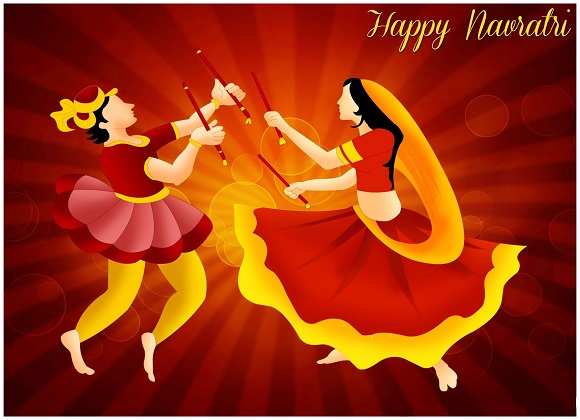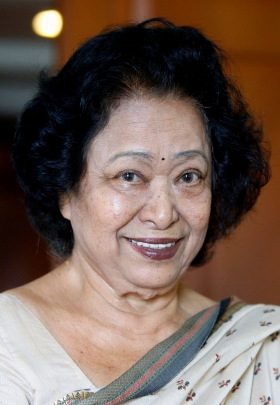Courses
Grow skills with quality courses
Pick of the week: Check out our round-up of this week's top picks from the most liked posts!

Celebrating Nine days of Navratri with Nine Modalities of Intelligence
The whole country is celebrating the auspicious Nine days of Navratri. Commemorating the nine colours of nine days. Rejoicing with fun, laughter, happiness, kinship, etc. If we talk about the relevance of Navratri in our Indian Education system, more specifically to Indian schools. These nine days are always observed as the religious days doing Saraswati Vandana, dressing children as nav Durgas, holding fast, playing dandiya or Garba, etc. Some schools are doing it in a blended model, some are doing it virtually but none of the schools is left behind celebrating these holy days in a way or the other. To these auspicious days of Navratri, we tend to connect innumerable aspects in context to the present society. We take pride and feel happy if our child recites Gayatri Mantra in the virtual class or narrates the story of celebrating Dusshera, we get convinced that the Right ‘sanskaras' are being given to our kids. Though I am not denying the possibility of conveying the righteous sacraments through such activities, rather I am trying to paint a larger picture, i.e. relevance of these nine days in our education system in real sense or how can we celebrate the symbolic nine days of Navratri in the educational ecosystem. As each day of Navratri symbolizes eight avatars of goddess Durga, who altogether are different having different powers, different capacities but all of them still symbolizes one divine cosmic energy which energizes the whole world. Similarly, our children who are part of one single cosmos, are different from each other. None of the children can be compared in any way. No two children have the same power, the same capabilities to thrive through the world.
In the early years, psychology advocated the traditional notion that there is one single type of intelligence, sometimes known as ‘g’ for general intelligence that only focuses on cognitive abilities. But this notion was challenged by the Multiple Theory of Intelligence proposed by Howard Gardener in 1983 through his book ‘Frames of Mind’. In our society and schools, linguistic and logical-mathematical modalities are the most valued and acknowledged ones. This theory broadens the definition of intelligence and outlines several distinct types of intellectual competencies. It emphasizes that there isn’t just one, single form of intelligence that a person either has or doesn’t have, but there are multiple intelligences that each individual may have in varying degrees and no two people have the same combination.
Imagine if along with other festive activities, the nine days of Navratri is celebrated with the nine major intellectual competencies, if each child’s mental capabilities and potentials are celebrated in a real sense then automatically the whole education system will be revived and rejuvenated.
In context to the major nine modalities of intelligence as proposed by Gardener (1983), here is a quick list of different teaching-learning activities pertaining to each type of intelligence.
After going through these nine modalities of intelligence, one can be assured that none of the people may have the same level or same kind of intelligence. Then why we as a parent, teacher or any caregiver keep on cribbing on the fact that our child is not doing well. Maybe our child is not getting the opportunities to thrive in the right direction towards his own and unique form of Intelligence. Therefore, celebrate the intelligence of your own child, celebrate these nine types of intelligence on nine different days of Navratri. Identify your child’s type of intelligence and give them ample opportunity to flourish and grow in their own way. For fulfilling the essence of enjoying the Navratri festival in all the educational institutions in a real sense celebrate different days of Navratri with different types of intelligence which a child may have.
Karnika Vyas | 14 Oct 2021

कला और संस्कृति
किसी भी देश या समाज की पहचान उस देश की कला और संस्कृति से होती है | प्रायः सामान्य रूप से यह सुननाने में आता है की वहां की संस्कृति बहुत धनी और समाज बहुत उन्नत था |संस्कृति वास्तव में वह सब कुछ है जो मनुष्य इस दुनिया में बनाता है। मेरा मतलब है सब कुछ, भाषा, कृषि, भोजन और भवन जो कुछ भी बनाते हैं वह एक संस्कृति है।इसमें साझा दृष्टिकोण, मूल्यों, लक्ष्यों और प्रथाओं के समूह को शामिल किया जा सकता है। कला - संस्कृति का विशाल उपखंड, कई रचनात्मक प्रयासों और विषयों से बना है। कला में दृश्य कला, साहित्यिक कला और प्रदर्शन कला शामिल हैं।
कला संस्कृति के पहलुओं में से एक है। यह वस्तुओं को बनाने या अवधारणाएँ स्थापित करने के लिए एक रचनात्मक दृष्टिकोण है। इसे एक भौतिक वस्तु के रूप में परिभाषित किया जाता है जिसे हम बनाते हैं चाहे वह पेंटिंग हो या फिल्म या जो भी हो। तो यह लगभग बनाने जैसा है। यह एक शिल्प या कौशल है जिसके द्वारा हम एक वस्तु बनाते हैं और वह वस्तु वैचारिक भी हो सकती है और भौतिक भी।यह मनुष्य द्वारा एक बहुत ही परिभाषित कृति है जिसे हम कला कहते है। कला विचारों को बदलने, मूल्यों को स्थापित करने और स्थान विशेष और समाज के अनुभवों को प्रभावित करती है। अगर सामान्य दृष्टि से देखा जाये तो कला एक संवाद है; यह विभिन्न संस्कृतियों और अलग-अलग समय के लोगों को छवियों, ध्वनियों और कहानियों के माध्यम से एक दूसरे के साथ संवाद करने में सहायक होता है।
कला अधिकांशतः सामाजिक परिवर्तन का माध्यम होती है।आप संस्कृति को बदलना चाहते हैं तो आपको उसमे अपने जीवन का बहुत कुछ दांव पर लगाना होगा | निश्चित रूप से कला वास्तव में एक बड़ा बदलाव ला सकती है । लेकिन समस्या यह है कि मैं हर समय देखता हूं कि लोग नहीं जानते कि वे किस बारे में बात कर रहे हैंउन्हें स्वयम स्पष्ट नहीं है कि कला और संस्कृति से उनका क्या मतलब है।
कला में संस्कृति की भूमिका :
कला मानव रचनात्मक कौशल और कल्पना की अभिव्यक्ति या अनुप्रयोग है, आमतौर पर दृश्य रूप में जैसे पेंटिंग या मूर्तिकला , नृत्य , नाटक और सिनेमा मुख्य रूप से उनकी सुंदरता या भावनात्मक प्रेरणा के लिए सराहना की जाने वाली रचनाएँ हैं । संस्कृति एक कलाकार की कलाकृति को एक सामाजिक संदर्भ को अभिव्यक्त करती है , सभी कलाकृतियां, कुछ हद तक, उनकी संस्कृति की एक झलक होती हैंऔर वे प्रचलित मान्यताओं और विश्वासों को दर्शाती हैं।
ऐतिहासिक कला का महत्व:
अतीत की कला का अध्ययन हमें सिखाता है कि लोगों ने खुद को और अपनी दुनिया को कैसे देखा है और वे इसे दूसरों को कैसे दिखाना चाहते हैं। कला इतिहास एक ऐसा साधन प्रदान करता है जिसके द्वारा हम अपने मानव अतीत और हमारे वर्तमान के साथ उसके संबंध को समझ सकते हैं, क्योंकि कला का कार्य मानवता की सबसे सर्वव्यापी गतिविधियों में से एक है।कला इतिहास की परिभाषा उन वस्तुओं का अध्ययन है जिसे उनके समय अवधि के भीतर माना जाता है। इतिहासकार दृश्य कला के अर्थ (पेंटिंग, मूर्तिकला, वास्तुकला) का विश्लेषण उस समय के आधार पर करते हैं जब वे बनाए गए थे। इतिहासकार इस बात में रुचि रखते हैं कि जिस समय वे बनाए गए थे, उस काल खण्ड में समाज का स्तर और लोगों की बौध्धिक क्षमता कैसी रही होगी और वह कला उस समाज का प्रतिनिधित्व करती है । सभी जाग्रत समाज और जागरूक राष्ट्र अपने अतीत को आने वाली पीढ़ी तक पहुंचाने के लिए संग्रहालय इत्यादि की व्यवस्था करते है |
भारतीय संस्कृति के सन्दर्भ में :
भारतीय संस्कृति विश्व की प्राचीनतम संस्कृतियों में से एक है। यह माना जाता है कि भारतीय संस्कृति यूनान, रोम, मिस्र, सुमेर और चीन की संस्कृतियों के समान ही प्राचीन है। कई भारतीय विद्वान तो भारतीय संस्कृति को विश्व की सर्वाधिक प्राचीन संस्कृति मानते हैं।
भारतीय संस्कृति:
भारतीय संस्कृति का स्रोत और उदय वैदिक युग से प्राप्त होता है। वेद विश्व के प्राचीनतम ग्रंथ माने जाते हैं। प्रारंभ से ही भारतीय संस्कृति अत्यंत उदारवादी ,सहकारी , दया और वसुधैव कुटुम्बकम पर आधारित रही हैंजिसमें जीवन के प्रति वैज्ञानिक दृष्टिकोण तथा आध्यात्मिकता का अद्भुत संगम पाया जाता है।
शारीरिक, मानसिक और आत्मिक शक्तियों का विकास ही संस्कृति की कसौटी है। इस कसौटी पर भारतीय संस्कृति पूर्ण रूप से खरी उतरती है।प्राचीन भारत में शारीरिक विकास के लिये व्यायाम, यम, नियम, प्राणायाम, आसन ब्रह्मचर्य आदि के द्वारा शरीर को पुष्ट किया जाता था |
कला और संस्कृति किसी भी समाज का दर्पण होती है | इसके माध्यम से उस समय के वर्तमान हालात और उन्नत समाज से आप परिचित हो सकते हैं | कलाकृतियां , इमारतें और नगर सज्जा के साथ ही साथ बौद्धिक रूप से उन्नत समाज की अवधारणा भी प्रतिबिंबित होगी | अपनी संस्कृति को सहेजकर रखने व उसका सवर्धन करने की जिम्मेदारी देश के हर नागरिक की होती है अर्थात हम् सभी संस्कृति के पोषक हो सकते है | जिससे भविष्य के लोग मानव सभ्यता के क्रमिक विकास और यात्रा को अनुभव कर सके और वर्तमान सुख सुविधा और संसाधनों का अतीत के संसाधनों के साथ एक तुलनात्मक अध्ययन कर सके | कला और संस्कृति के माध्यम से हम स्वयं की कला कृतियों , परंपरा और समाज की प्रथाओं पर गर्व की अनुभूति भी करते हैं |
.Anand Mishra | 05 Oct 2021

असाधारण शक्तियां
दुनिया में मौजूद हैं सुपर ह्यूमन
आपने हॉलीवुड-बॉलीवुड की फिल्मों में ऐसे लोगों को देखा होगा जिनके पास सुपर नेचुरल पावर होती है। ऐसे लोगों को सुपरहीरो भी कहा जाता है। लेकिन क्या आप जानते हैं कि दुनिया में कई सारे ऐसे लोग मौजूद हैं जिनके पास ऐसी शक्तियां मौजूद है जिन्हें एक्सप्लेन कर पाना विज्ञान के बस से भी बाहर है। ऐसे लोगों को साइंस की भाषा में मेटा ह्यूमन या फिर म्यूटेंट कहा जाता है। अधिक जनकारी के लिए यूआरएल पर जाएँ livehindustan.com.
Gurushala | 25 Sep 2021

तारा गुच्छ
तारों की विचीत्र आकृतियां
तारागुच्छ (star cluster, स्टार क्लस्टर) या तारामेघ तारों के विशाल समूह को कहते हैं। विशेष रूप से दो तरह के तारागुच्छ पायें जाते है -
गोल तारागुच्छे (globular cluster, ग्लोब्युलर क्लस्टर) सैंकड़ो हजारों घनीभूत वितरण वाले बूढ़े तारों का समूह है जों गुरुत्वाकर्षण से आपस में बंधे होते है।
खुले तारागुच्छे (open cluster, ओपन क्लस्टर) में तारों का वितरण अपेक्षाकृत शिथिल होता है और इसमे प्रायः कुछ सौ की संख्या में नवीकृत तारें पायें जाते है।.
Gurushala | 23 Sep 2021

